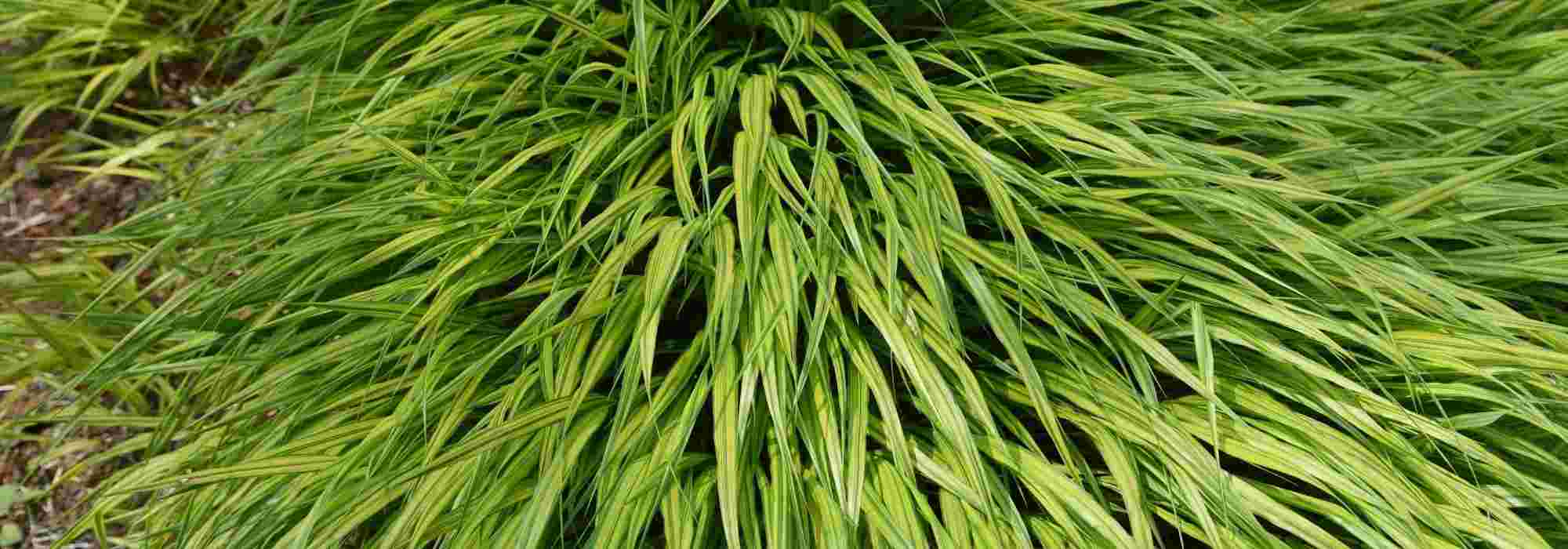
Growing Hakonechloa in a pot
All our tips to enjoy this beautiful grass on a balcony or terrace
Contents
Hakonechloa, also known as Japanese grass due to its origins, is a stunning perennial grass. Once established in the garden or in a pot on a terrace, balcony, or patio, it becomes fuller each year, but requires patience as its growth is slow. This “disadvantage” turns into an advantage for beginner or contemplative gardeners who enjoy a beautiful setting without needing to intervene often. Preferring partially shaded to shaded locations, with neutral to acidic and consistently moist soil, it is an essential woodland grass. Even if you don’t have a garden, or if your soil isn’t suitable, adopt it in a pot to enjoy its soft and elegant habit, its changing and decorative foliage, and its minimal maintenance. Find all our tips for growing Hakonechloa in a pot, maintaining it, and dividing it.
→ Learn all about Hakonechloa, its cultivation, care, and how to pair it.
What pot and substrate to choose?
Size and material of the pot
Hakonechloa spreads slowly, so it does not require a very large pot. A container of about thirty centimetres in all dimensions is sufficient.
- Materials such as terracotta or stone are among the most porous. They allow the soil to breathe better, but the water in the substrate also evaporates more quickly, which may require more frequent watering. If they are glazed, they lose these properties. Of course, in all cases, it is essential to choose frost-resistant pots to prevent them from cracking in winter.
- Plastic and composite materials have the advantage of being lighter and offering shapes and colours that allow for all kinds of creativity. They also retain moisture well, which the Japanese Grass appreciates.
- Stone is heavy, but nothing prevents you from opting for this material if it fits better into the decor, just like wood, which is also a noble material, provided it has been treated to make it more durable over time.
- Metal heats up very quickly when in the sun, but it can be interesting for concealing an unattractive plastic pot, for example.
Finally, water-retaining containers allow for spaced watering, and a saucer creates a water reserve that can be useful in season (in winter, turn the saucer upside down and place the pot on top).
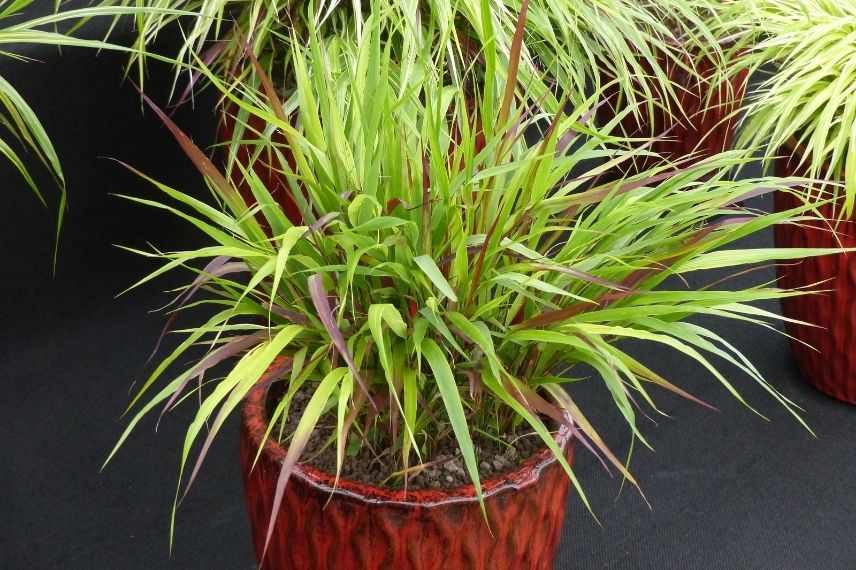
Hakonechloa macra ‘Beni-Kase’
What substrate for Japanese herbs?
Hakonechloa is a plant that prefers neutral to acidic soils, which are rather light and humus-bearing. If your soil is not calcareous, you can use it as a starting base, mixed with a quality potting soil in equal quantities. Add two handfuls of compost and a handful of crushed horn to nourish your grass in the long term. If you do not have soil, simply use a good potting mix instead.
Jean-Christophe’s tip: to increase water retention, I incorporate a water-retaining agent such as Stockosorb into the mix, following the instructions provided on the packaging.
What exposure should be preferred?
Hakonechloa is a Japanese woodland grass. It is therefore more comfortable in non-scorching environments, where light only penetrates a little in the morning or evening, or is filtered during the day by light overhead foliage. In very hot regions, place it in a shaded spot, but not excessively dark, as a bit of light is beneficial for beautiful foliage colouration. Hakonechloa ‘All Gold’, for example, tends more towards green than yellow if it lacks light. The autumn colours of Japanese grasses are also less remarkable under these conditions.
In a humid and cooler climate, a sunnier exposure is possible.
On a balcony or terrace, avoid full south-facing exposures, which are too hot for it, unless it is shaded by taller plants during critical hours.
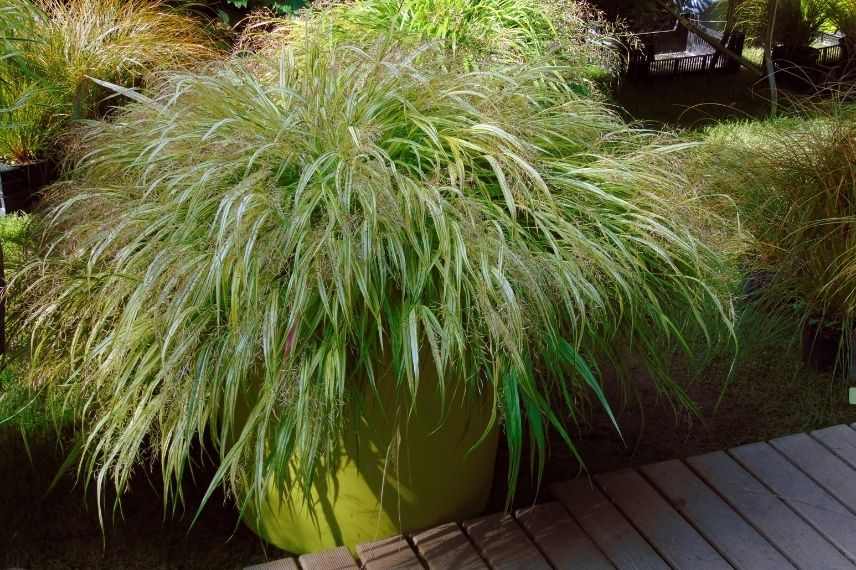
Hakonechloa macra ‘Aureola’ in a semi-shaded situation
Discover other Hakonechloa
View all →Available in 0 sizes
Available in 1 sizes
Available in 0 sizes
Available in 2 sizes
Available in 2 sizes
Available in 1 sizes
Available in 2 sizes
Available in 2 sizes
Available in 2 sizes
Available in 2 sizes
When and how to plant Hakonechloa in a pot?
Once you have chosen your pot and prepared your substrate, you can proceed to planting. The best time to plant Hakonechloa is early spring. To do this:
- Soak the pot in a large volume of water to moisten the entire root ball;
- Place a piece of broken pot or a large stone over the drainage hole. This prevents the soil from being washed away too quickly during watering;
- Pour your mix into the pot, then place your plant in the centre, so that the top of the root ball is a few centimetres from the top;
- Fill in with the remaining mix and lightly firm it down with your fist;
- Water generously, ensuring everything is soaked;
- Cover the soil with a mulch. Mineral (gravel, slate petals…) is more durable and can add a splash of colour if desired. Organic (flax straw, bark, cocoa shells…) has the advantage of nourishing the plant as it decomposes. Just remember to regularly add more, without smothering the plant;
- Place your pot in the chosen location, on a saucer, which acts as a water reservoir for the roots. The evaporation from this reservoir is also beneficial for the foliage.
Read also
6 grasses for potsMaintenance, pruning and care
Hakonechloa is one of those perennials suited for beginner gardeners, due to its low maintenance and ease of cultivation. With slow growth, it is avoided by slugs, never gets sick, and is quite hardy (-15°C), requiring very little care. This mainly consists of regular watering, as this grass does not like dry soil. In season, it may be necessary to water daily, preferably in the evening. In autumn and winter, seasonal rains are generally sufficient for the plant’s needs.
The foliage of Hakonechloa is described as “marcescent,” meaning it dries and takes on a straw colour, remaining decorative for a good part of the winter. In spring, when the young leaves begin to develop, it is enough to clean the old foliage without damaging the new shoots.
Right after this cleaning, and after removing the mulch, you can incorporate compost into the top few centimetres of the soil, or a nitrogen-rich fertiliser, which stimulates the foliage, before replacing the mulch.
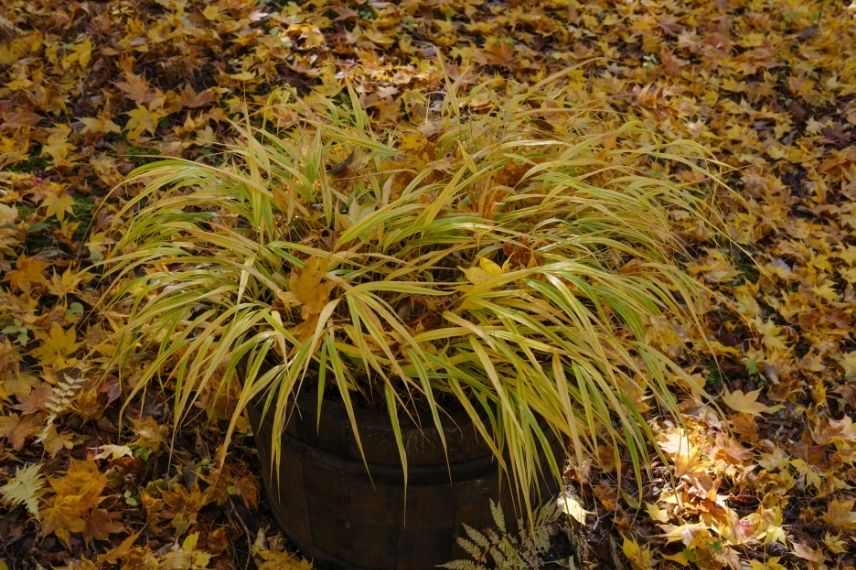
Hakonechloa in autumn
Repotting and dividing Hakonechloa
Even though it develops and spreads at a snail’s pace, Japanese herb may find itself a bit cramped in its pot after a few years. If the level of compost has significantly dropped in the pot, or if the roots are tight (simply remove the plant to observe the root system), it is then time to repot. The benefits are twofold. Firstly, it allows you to refresh the substrate and give the plant more space. Secondly, division results in new clumps, which can be replanted to enhance the decor or given away. Preferably do this in spring when growth resumes, and just after cutting back the dried foliage. In mild regions, it is possible to divide in autumn, but it would be a shame not to enjoy the decorative effect of this grass during that season.
- Remove your Hakonechloa;
- Using a sharp tool, slice the clump into several pieces. The number depends on your goals. Do you just want to rejuvenate the clump? Simply cut it in half. Want to obtain several clumps? Make several smaller pieces, but they will take longer to reach their full potential;
- Replant immediately in a suitable pot with appropriate substrate;
- Water and mulch.
- Subscribe!
- Contents

































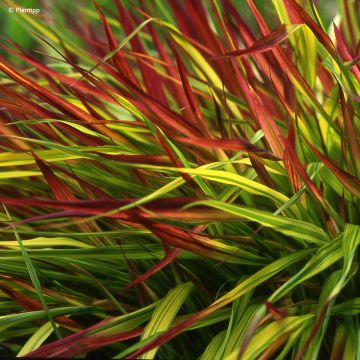
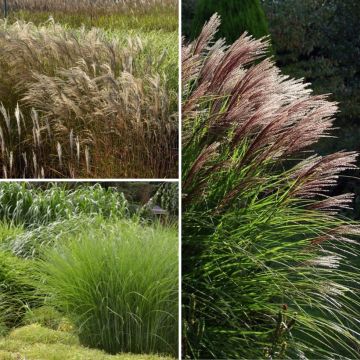
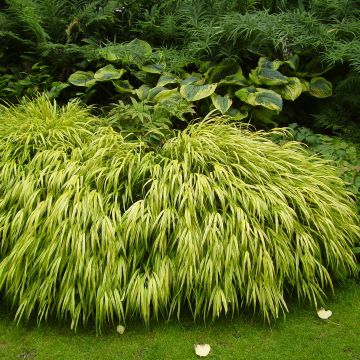

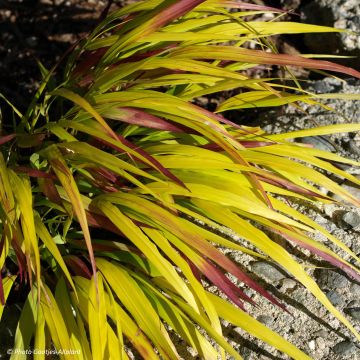
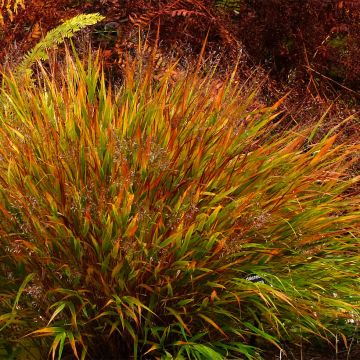
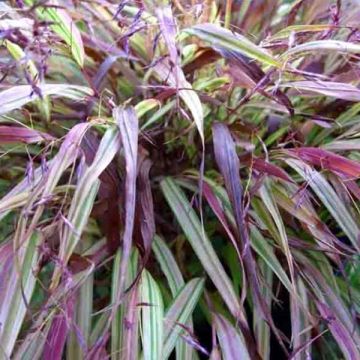

Comments